So nearly three weeks after the beginning of the attack on Ukraine it seems that a number of generals have been suspended by Putin. The exact figure is unknown because it tends to grow by the day. The invoked reason is that those generals had ensured the tenant of the Kremlin that the abduction of Ukraine was going to be a three day job, four at the most.
By Eric H. Biass – March 16, 2022 (©)
The thing is that Putin is not only terrorising his nation and neighbouring countries, but also those upon whom he relies, namely his generals who are petrified to tell him the truth to a point where they obviously only tell him what he wants to hear.
Not a piece of cake
These generals knew damn well the operation was not going to be a piece of cake simply because they were at the very heart of the debacle causes – a debacle that started as soon as the 40 tor 60km-long column of vehicles had crossed the border only to come to a grinding halt. That was their first mistake.
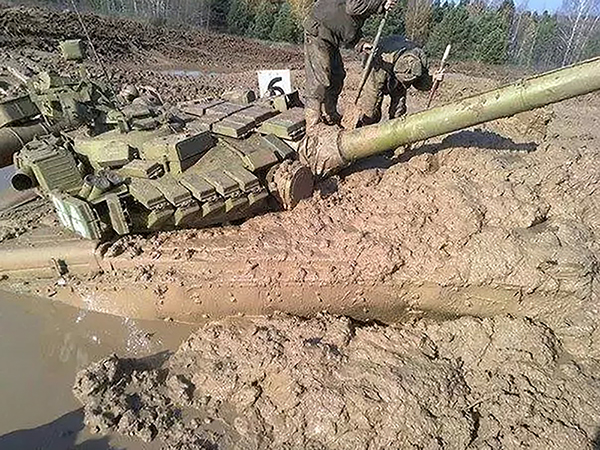
Were they also scared to tell their supreme boss that it was not the right moment to cross the Rubicon – or rather the now famous Rasputitsa – or is it that the routine of their cushy position totalled their general culture to the point of ignoring a historical weather occurrence that turns most of the plains of that Russian, Ukrainian and Belarusian area into a gigantic mud swamp twice a year?
It looks like this T-80 – the pride of the Russian Army, complete with reactive armour protection – is taking things really down to earth, although its state-of-the art Shtora anti-armour jammers (the searchlight-like device on each side of the barrel) are sure never to jam anything in a near future.
We’ve all seen the satellite pictures [1][2] showing what Putin must have hated seeing and probably made more than a general quiver in their boots. The drama extends well beyond the sight of that blocked convoy, as anyone’s eye can notice the sun shining in the surrounding flooded fields.
As evidenced by this 1894 picture by Alexei Savrasov, the Rasputitsa is far from being a recent phenomenon (credit: Wikipedia)
Trouble, as it is known, usually comes by the truckload and the irony in this particular instance is that the trucks were stranded solid, thereby blocking the access to any support vehicles if they ever existed, not to mention logistics vehicles. After a couple of days – precisely when they were supposed to enter Kiev to liberate it from its nazis – they still were there, with crews running out of food and vehicles running out of fuel because though sitting in the mud, they still needed provide heat in those freezing conditions. A first worrying sign actually sprung from that picture revealing a Pantsir 8×8 air-defence vehicle bogged down to – literally – its wheel hubs, with tyres ripped off their rims and even some of these torn off their hubs.[1]
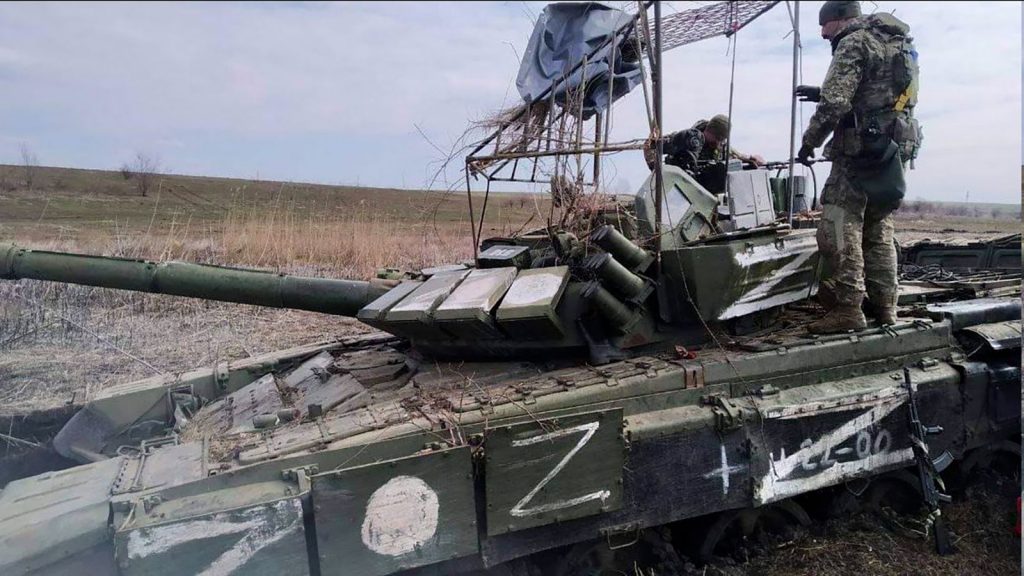
Things are beginning to look pretty sour for Mr. Putin as he is gradually going to find it increasingly difficult to win a war with empty vehicles on empty tanks abandoned by soldiers on empty stomachs – in this occurrence an abandoned T-72 main battle tank and a tracked self propelled howitzer.
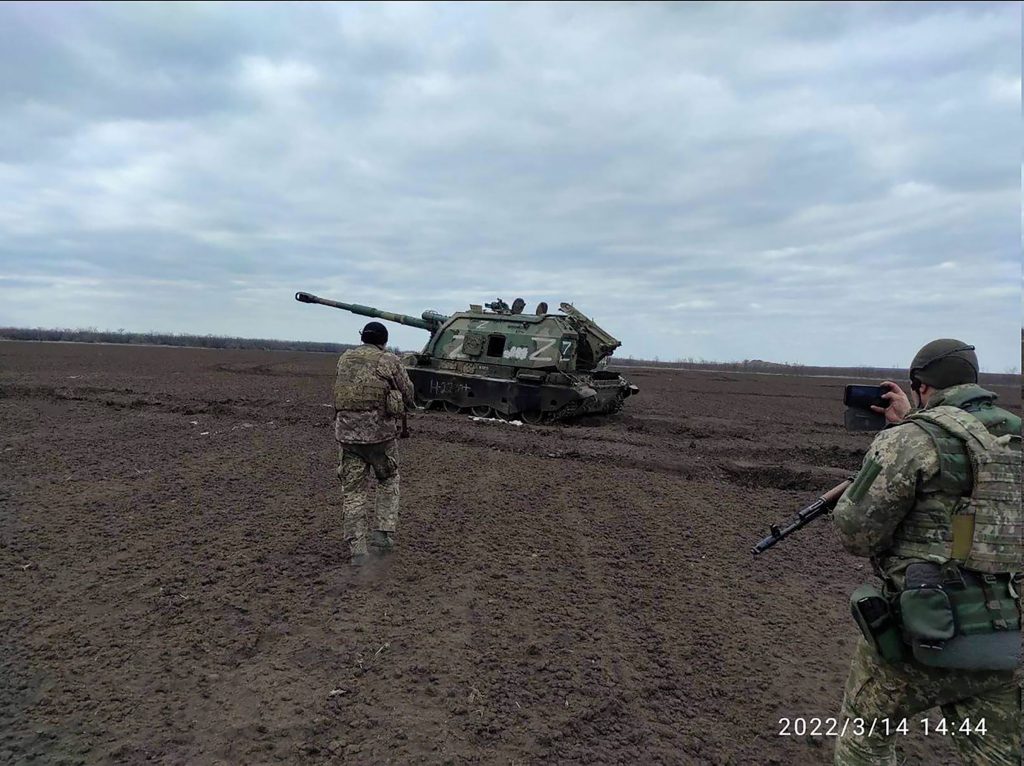
This picture has actually triggered the curiosity of a number of sharp-eyed observer who realised that a frightful number of other vehicles where also running on their rims because their tyres, obviously cheaper, appeared to be made in China. In the meantime, and by day four hence, supplies were still nowhere to be seen. But what supplies? What for? It was all to have been over by then! Food and diesel fuel were to have been found in Kiev! As we saw in an earlier European-Security.com article, vehicle-to-vehicle communications boiled down to the use of civilian walkie-talkies. What happened to the vehicular VHF comms? That’s a lot of things missing for an operation of that size, not to mention the obvious lack of training that would have necessarily highlighted so many shortcomings.
It’s got a name
In a situation where you are supposed to command a ship and deliver a full load from A to B but only deliver half at B without telling anyone, suspicions will eventually arise as to where the difference has gone. This is where a word that starts with a « c » and finishes with an « n » gradually appears on the wall of dirty names. And it’s not « constitution ». In all evidence, Russia must have a number of well-off generals. But in the end who is to really blame them in a nation where embezzlement at the highest levels is almost an institution.
This « institutionalised way of doing » probably also accounts for similar shortcomings in other fields. For instance, where are all those formidable weapons Putin has been not only bragging about but also threatened to use in recent years? The truth might be that, indeed, he’s been led to believe they existed, but only at prototypal stage. Getting a prototype to work is one thing. That stage is called a proof of concept, but industrialising a design is an entirely different kettle of fish as any production engineer will explain. It generally is the longest process in the gestation of a product. But with a boss who will only hear what he wants to hear a lot of dust has to be swept under the carpet.
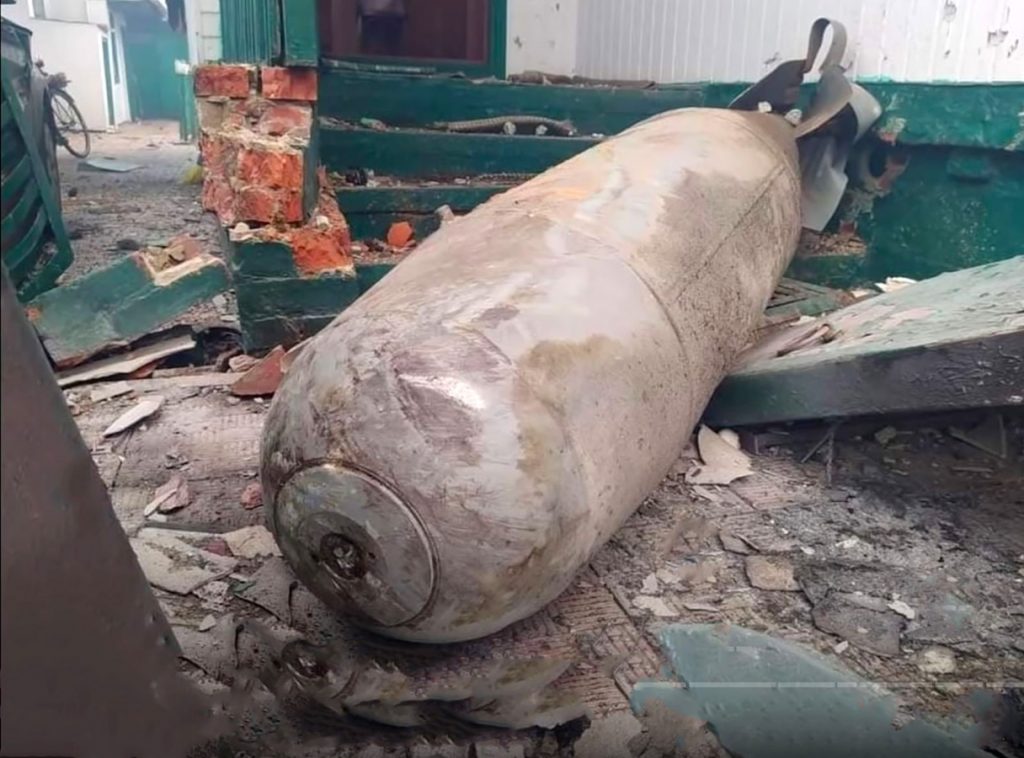
An this might explain why yours truly was totally baffled to see the footage of a Ukrainian deminer in the vicinity of Kiev defusing an unexploded bomb that suspiciously looked like a Bazalt-made Fab-250 – a bomb that dates back to the Soviet era.
Command and Control structure (or lack thereof)
Now this brings along another question: why are there so many duds around (duds being unexploded devices)? The explanation probably lies in the fact that launch aircraft need to come in a very low altitudes to narrow their exposure window to Manpads missiles, typically Stingers. The glitch is that such bombs have nose-mounted safety fuses that enable them to become active only when they’ve reached a safety distance from the launcher aircraft.
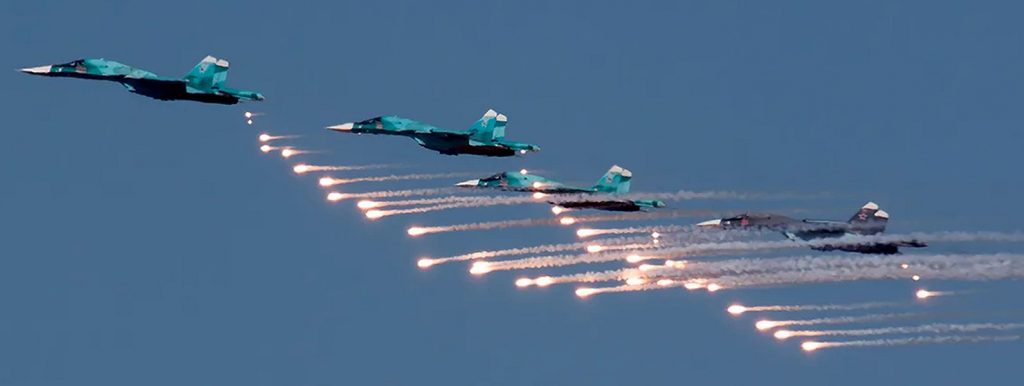
Four Sukhoi Su-34 fighter-bombers are here seen demonstrating their infrared seeking missile counter-measure flares. They would typically use them in Ukraine to protect themselves from the deadly sting of short-range and shoulder-fired Stinger missiles. The Su-34 is a two-man crewed ground attack derivative of the Su-27, characterised by its side-by-side seating arrangement (as opposed to tandem).
These same attacking aircraft,[3] by the way, are strangely seen operating in pairs, one literally in the shadow of the other. Our sources put this way of doing down to the inability of one pilot to cope alone with the tactical situation due to a lack of C2 communications. Which yet again raises another question: how can one possibly dream up a long range attack without a proper command and control system? But this joins the afore-mentioned issue of walkie-talkies and lack of UHF and VHF comms. This point of view seems to be shared by French Air Force General François Mermet who told European-Security that « the Russian Air Force has excellent equipment but appears to have a problem with the command method, in other words a structure that would enable them to properly set up, manage and monitor an aerial manoeuvre involving up to 500 aircraft« .
By Eric H. Biass – March 16, 2022 (©)
[1] Raspoutitsa, When You Hold Us! – by Joël-François Dumont – (05.03.2022)
[2] Russian Hardware For Grabs Thanks To Appalling DNA-Inherited Logistics by Eric H. Biass – (09.03.2022)
[3] The Mysterious Case of the Missing Russian Air Force by Justin Bronk (RUSI – 28.02.2022)
[4] Video podcast on the Russian fighting strategy in Ukraine by Xavier Titelman & Antoine Bussy.










